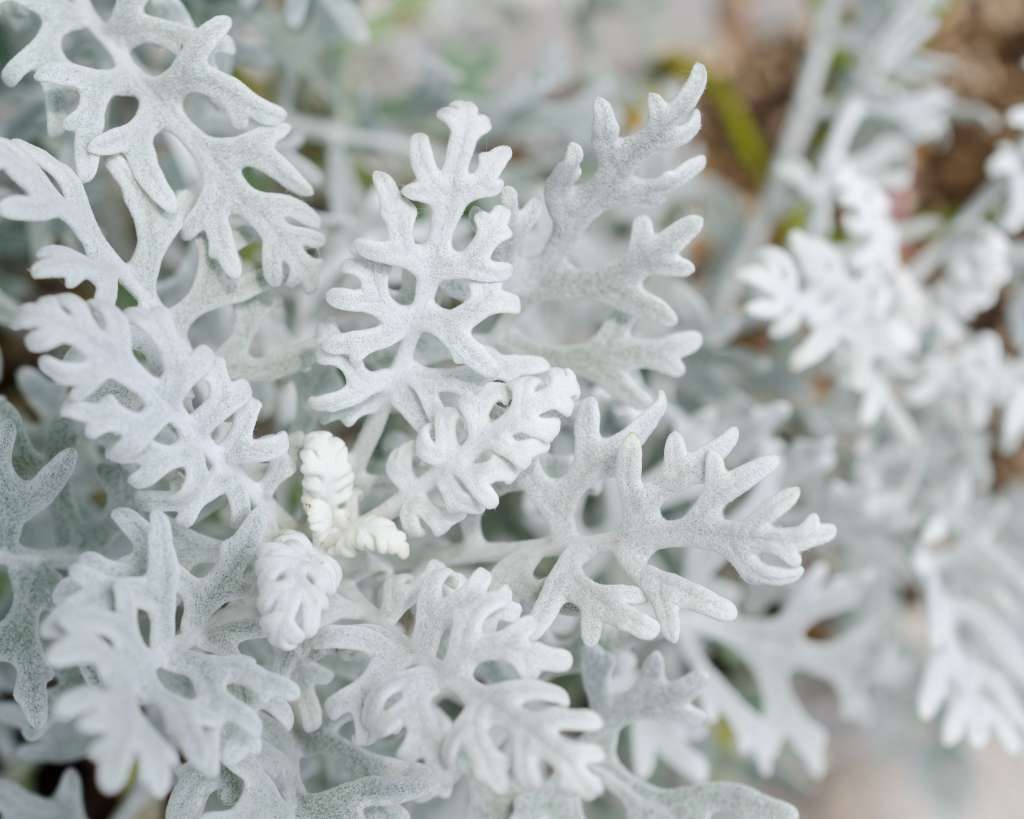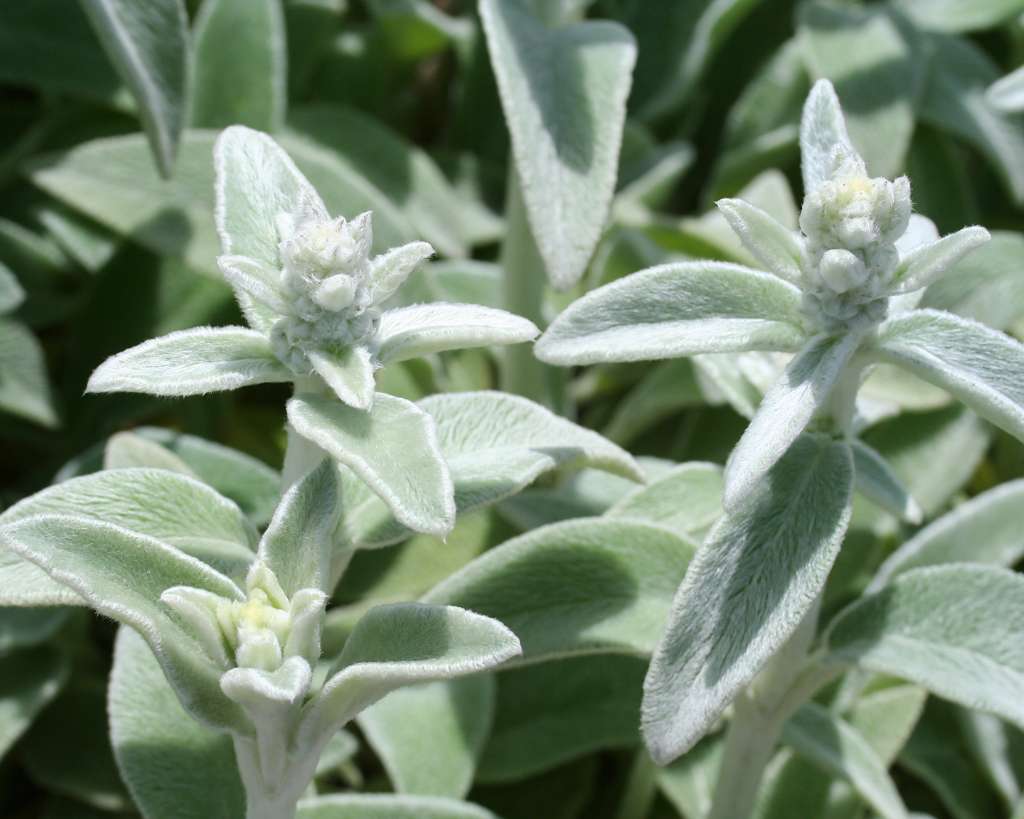Dusty Miller(Jacobaea maritima) is a beautiful, hairy, drought-tolerant plant which can be grown indoors or outdoors. With its silvery-white foliage, it is one of the most likeable plants in the garden.
Its delicate, lacy leaves create a beautiful contrast with other plants in the garden and make it an ideal choice for various landscaping projects. Growing Dusty Miller is easy and rewarding, whether you want to add some texture to your flowerbeds or create a unique focal point in your yard.
Dusty Miller, just like other ornamental plants, loves to grow in full sun. It prefers hardiness zones of 8-11. It is much harder to grow Dusty Miller in colder climates, and you might have to take extra care with proper mulching and pruning to keep your plant safe.

Best Location To Grow Dusty Miller
Gardeners love the versatility of Dusty Miller. It can be used in a variety of landscaping locations. It looks magnificent when planted in different locations, from rock gardens to borders to garden beds. But, you have to bear in mind some aspects before planting it.
As a sun-loving plant, it is important to grow Dusty Miller at a place that receives proper sunlight. Don’t grow trees or plants near it which tend to outgrow it.
Use well-draining, moist soil to avoid root rot. Extreme windy conditions also hamper the growth of the plant.
How To Grow Dusty Miller
- First, select a spot in your garden that receives full sun or partial shade and has well-draining soil. Prepare the ground by loosening it with a shovel and mixing some compost.
- Plant the seeds 1/4 inch deep and water them thoroughly. Keep the soil moist but only soggy once the seedlings emerge, which typically takes 7-14 days.
- Once the seedlings have grown to about 4 inches tall, thin them out so that there are about 8-12 inches between each plant.
- Keep the soil evenly moist throughout the growing season, and feed your plants with a balanced fertilizer every two weeks.
- Prune off any dead or damaged leaves as needed.
Dusty Miller Care
One of the easiest plants to grow and doesn’t require much special treatment.
Light
As mentioned earlier in the article, Dusty Miller thrives under direct sunlight. During sweltering climates, it will require a bit of shade from the blazing sunlight. However, it will perform better in colder climates by absorbing direct sunlight.
Water
It doesn’t require frequent watering to survive. Water thoroughly when the soil is dry to touch, usually once or twice a week. Make sure to water the soil, not the leaves, as they are susceptible to fungal disease if they remain wet for too long.
Avoid over-watering, as this can lead to root rot, a common problem in Dusty Miller plants. Besides root rot, overwatering can also hamper the growth of the plant.
You may need to water more frequently in hot or dry weather to keep the soil consistently moist. Always check the soil moisture level before watering to ensure the plants get the right amount of water.
It’s also a good idea to provide good drainage for Dusty Miller plants, as they prefer to avoid sitting in water-logged soil. If you are growing it in a pot, you can repot the plant and take care of it by maintaining well-drained soil.
Soil
Dusty Miller should be planted in well-draining soil with a pH of 6.0 to 7.5. It prefers soil rich in organic matter, such as compost or manure, to help keep the roots moist and provide essential nutrients for healthy growth. However, it can tolerate poor soil as well.
It’s important to monitor the moisture levels of your dusty miller plants and water them regularly, if necessary, during dry periods or when temperatures are high.
Fertilizer
It is important to determine the soil type and other growing conditions before starting the fertilizing process to grow the Dusty Miller plant.
It is not a heavy feeder and can grow well in soil with moderate fertility. However, to maintain healthy growth and foliage color, a slow-release fertilizer can be applied at planting time and again in the middle of the growing season.
Pruning
It is a hardy plant that doesn’t require much pruning; however, if it is desired to encourage a bushier, fuller plant, some pruning may be beneficial.
Pruning should focus on removing dead foliage or any straggly stems that don’t fit into the plant’s overall shape. However, it has that natural shape with short branches that don’t require a lot of effort on pruning.
Temperature
The ideal temperature range for growing the plant is between 65°F and 75°F (18°C to 24°C). Temperatures above 80°F (26°C) can cause the leaves to become scorched, while temperatures below 50°F (10°C) will slow down growth and may even kill the plant.
Propagation
Dusty Miller can be easily propagated by using any of these three methods, which we have discussed below:
- Cuttings: One of the most common methods for propagating is to take stem cuttings in late spring or early summer. Cut a stem about 4-6 inches long, remove the lower leaves and plant the cutting in a well-draining soil mixture. Keep the soil moist but not waterlogged, and place the cutting in bright, indirect light. In about 2-3 weeks, roots should have developed, and new growth should appear.
- Division: Another way to propagate is to divide the plant during the spring or fall. Gently dig up the entire plant, then separate it into smaller sections, ensuring each section has a good root system. Replant each section in well-draining soil and water thoroughly.
- Seed: Another method is to grow from seed. Sow seeds in a well-draining soil mixture in late winter or early spring when there’s no sign of heavy frost. Cover the seeds with a light layer of soil, water well and keep the soil moist. Seeds should germinate in about 2-3 weeks, and seedlings should be ready to be transplanted into individual pots when they have a couple of sets of leaves.
Dusty Miller Varieties
Dusty Miller has different varieties, which have some differences between them. Many gardeners should choose the variety that will suit their landscape design.
- Silver Dust: This is a compact and bushy variety with bright silver foliage that contrasts the garden beautifully. It grows to a height of about 12-18 inches.
- New Look: This variety has a more upright growth habit, reaching a height of about 18-24 inches. The foliage is a soft silver color with a slightly wrinkled texture. This variety looks almost similar to Lamb’s Ear plant.
- Silver Lace: This tender perennial’s lacy, delicate leaves look lovely.
Dusty Miller Companion Plants
From contrasting color plants to silver-gray plants, Dusty Miller can add versatility to your garden by being a companion plant.
Aster

Beautiful purple colored blooms of Aster look fantastic when planted next to Dusty Miller. Moreover, Asters provide nectar for pollinators, which can help dusty miller to attract beneficial insects that will help control pests.
Salvia

Salvia has different varieties with red, purple and violet-colored blooms that complement the silver-gray foliage of Dusty Miller well. Being taller than Dusty Miller, Salvia can provide some shade during the hot summer months.
Coleus

The contrasting colors of the two plants can create a stunning display in any garden. Dusty Miller complements the bold, red foliage of coleus really well. One variety of coleus which you can plant with Dusty Miller is the ”Kong Coleus”.
Lamb’s Ear

A beautiful bedding plant covered extensively on our blog is Lamb’s Ear. Both plants have the same silvery leaves, fuzzy texture and similar growing habits, which makes them ideal for companion planting.
Dusty Miller Growing Problems
Improper growing conditions affect the plant negatively. For optimal growth, ensure it is provided with sunlight and shade at appropriate times. In most cases, it becomes leggy when grown under shade. It largely remains unfazed by drought, deer, fire and shade. Although you should bear in mind a few things that can hamper your lovely plant’s growth.
Pests & Diseases
Dusty Miller is a workhorse that tolerates a lot of pests and diseases. However, aphids are an exception that generally feasts on the underside of the leaves. You can remove it by mixing a few drops of neem oil and a couple of spoons of liquid soap in a water bottle. Wash the foliage well to remove the obnoxious pest from the plant.
Powdery Mildew is a disease that often affects a lot of ornamental plants, including Dusty Miller. It is generally caused by overhead watering, poor air circulation, and not exterminating aphids properly.
You can use fungicides to control the disease. An organic option is to take 1:10 ratio of milk and water. Wash the affected parts thoroughly to control the disease.
Root rot can also cause severe damage to the plant if proper drainage is not provided. If the soil is too wet or soggy, it can create an environment where pathogens and fungi can thrive. This can result in the roots being deprived of oxygen, leading to root rot.
The symptoms of root rot include yellowing of the leaves, wilting of the stems, and stunted growth, which can ultimately lead to the death of the plant if not treated properly.
FAQs
Is dusty miller an indoor plant?
It is primarily grown as an outdoor ornamental plant, but it can also be grown indoors as a houseplant under certain conditions.
How fast does dusty miller grow?
It can grow about 6-12 inches tall and wide in optimal growing conditions in a single growing season.
Is dusty miller poisonous to dogs?
It is not considered to be a poisonous plant for dogs. While it contains some toxins, the levels are too low to cause serious harm to your pet. However, ingestion of large amounts of dusty miller can still cause mild stomach upset in dogs, including vomiting and diarrhea.
Does dusty miller come back every year?
It is grown as an annual plant, which means it completes its lifecycle from seed to flower to seed within one growing season and then dies. In warmer climates, it acts as a short-lived perennial.




